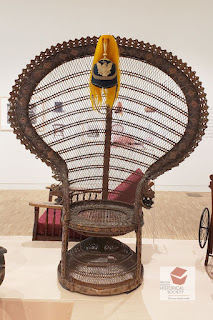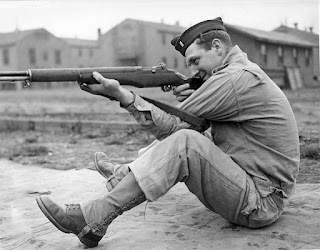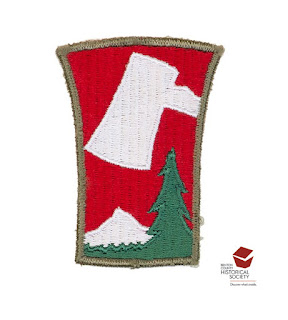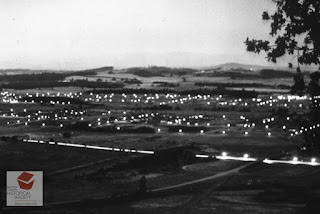Lately I have seen a number of ads for the new Addams family movie which show the character Morticia seated in a “peacock” chair similar to the one on display in the Benton County Historical Society's Corvallis Museum.
 |
| Peacock Chair |
The chair is made of rattan, a lightweight but strong and durable material from a vine in the palm family. During the late 1800s, homeowners wanted to escape hot, stuffy interiors for cooler outdoor spaces such as porches and outdoor furniture that would stand up to the weather. Rattan became a popular material as it could be fashioned into the elaborate shapes then popular-- designs which also had spaces within that helped air circulate. Travelers to the Philippines brought back peacock chairs because they fit these parameters and were prized because they were “exotic.”
Peacock chairs became popular with photographers as well. They are light, easy to move around, with eye-catching designs, and a tall back that frames the subject’s face. Some celebrities photographed sitting in a peacock chair include Elizabeth Taylor, Marilyn Monroe, Cher, John F. Kennedy, Truman Capote and musicians Al Green and Julio Inglesias. In 1967, Eldredge Cleaver photographed Black Panther leader Huey Newton sitting in a peacock chair holding a rifle and a spear. A zebra-print rug covered the floor and Zulu-style shields flanked the chair. The image became so well-known at the time that sometimes when Newton could not make a meeting, a peacock chair was placed on stage to represent him So, for a time, the chair represented Black and colonial repression.
The peacock chair is in the “Hats and Chairs” exhibit. It is paired with a plumed helmet.
 |
| U. S.
Army's 10th Cavalry "Buffalo Soldier" parade helmet |
You might wonder, as I did at first, what is the connection between these two seemingly disparate items. In fact, there are two such connections.
The helmet is a parade or dress helmet used by the U. S. Army's 10th Cavalry from 1881 to 1902. The 10th regiment, authorized in 1866, was one of two regiments made up of Black enlisted men. They were first stationed at Fort Leavenworth, Kansas where they became known by the nickname “Buffalo Soldiers” either due to the supposed similarity of their hair to that of the buffalo or because they fought like wild buffalo. The unit also fought in the Battle of San Juan Hill during Spanish-American War. With the peace treaty with Spain, Puerto Rico, Guam and the Philippines became US territories. After Philippine insurgents led by Emilio Aguinaldo attacked American troops, the 10th cavalry was one of the units sent there as reinforcements. The war, which lasted from 1899 to 1903, was opposed by many Blacks because they saw it as an attempt to subjugate non-whites to establish a colonial empire. They favored Philippine independence. In spite of this, the 10th performed well, with some soldiers earning the Medal of Honor. As a result, the army began to choose officers from the ranks of the enlisted Black men. Henry O Flipper, the first black graduate of West Point, was an officer of the Buffalo soldiers.
So, both the chair and the helmet have an association with the Philippines. Both also have a connection (through the famous photograph of Newton) with Black history and issues of racism and colonialism.
 |
| Hats & Chairs exhibition at the Corvallis Museum, Oregon, USA |
By Martha Fraundorf, Volunteer for Benton County Historical Society, Philomath, Oregon









